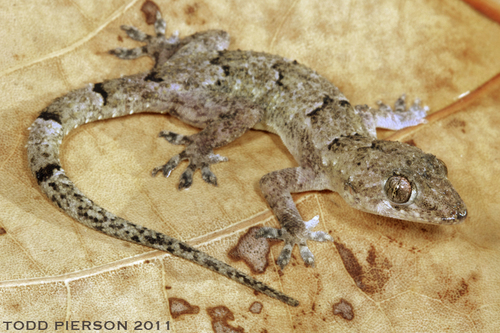
Tropical House Gecko
The tropical house gecko thrives in bustling urban areas, feasting on insects under the cover of night. Known for its distinctive chirping and impressive climbing skills, it adds a touch of the wild to city life, playing a crucial role in controlling pest populations.
5 years
Lifespan
Least Concern
Conservation Status
Stable
Population Trend
Distribution Range of the Tropical House Gecko
Hemidactylus mabouia, commonly known as the Tropical House Gecko, is originally native to sub-Saharan Africa. It is widely distributed across the African continent, particularly in West Africa and Central Africa.
Tropical House Gecko's Habitat
Environmental Conditions
Hemidactylus mabouia thrives in warm, tropical environments. It is often found in human-modified habitats, including urban and suburban areas, where it can live in close proximity to human dwellings. This gecko prefers warm temperatures and is highly adaptable to various environmental conditions as long as the climate remains temperate to tropical.
Ecological Niche
The Tropical House Gecko is primarily insectivorous, feeding on insects and other smaller arthropods. It occupies a nocturnal niche, being most active during the night, which helps it avoid predators and adapt to urban lighting conditions. Hemidactylus mabouia is commonly found on walls, ceilings, and other structures where insects are plentiful, allowing it to thrive in human-altered environments.
Copyright @ Nature Style Limited. All Rights Reserved.
 English
English